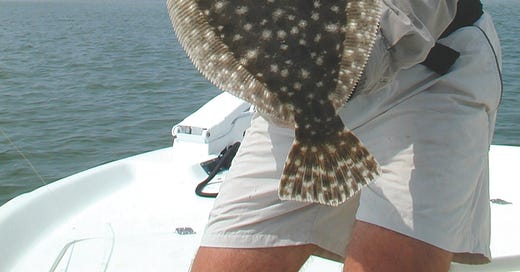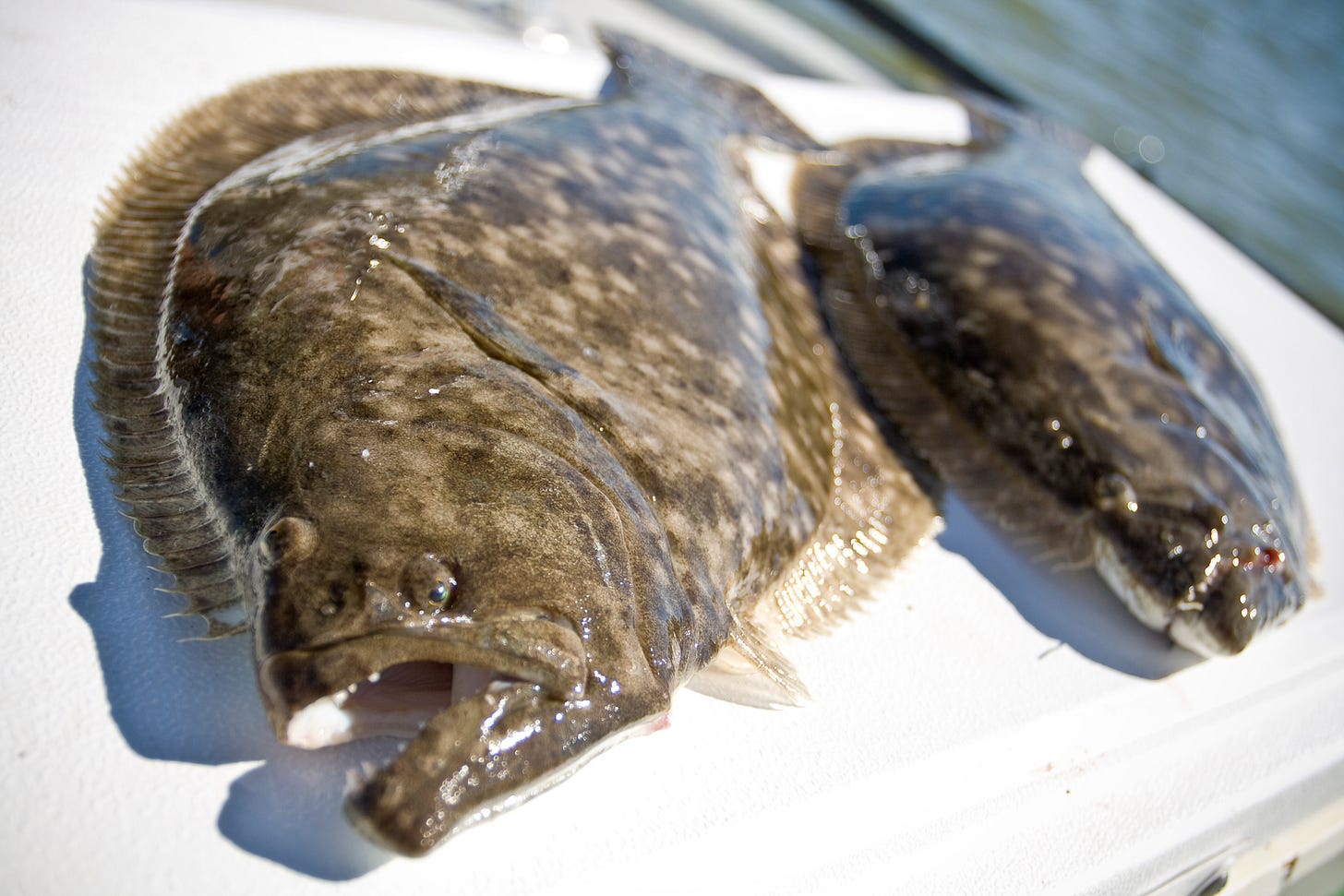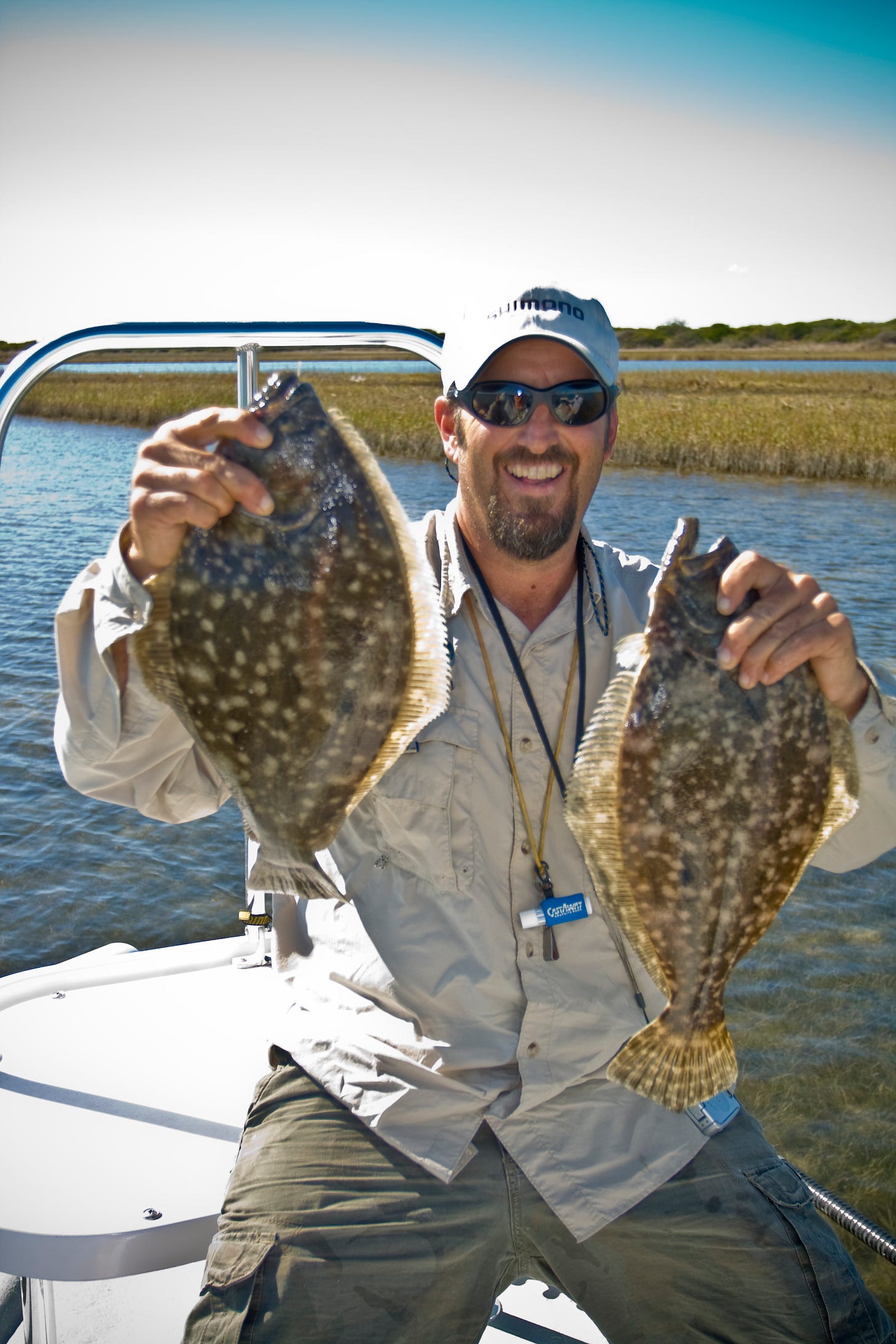Texas flounder fishery faces uncertain future
The Texas flounder fishery has certainly seen better days and it’s uncertain if we’ll ever see the “good-old days” again. Here's an in-depth look at how we got here with flatfish.
The highlight of my summers as a youngster growing up in the 1980s was our family’s annual trek to Rockport. My father’s mother and father and his brothers had frequented the area since the 1960s, back when the now-chic vacation spot was simply a quaint fishing and shrimping village. The small house my grandmother and grandfather owned for years that led to untold fishing excursions for my father and uncles still stands in the oldest part of town.
For a kid who was born into an outdoors way of life that included fishing and hunting of any kind, spending a week or two in the Texas coastal hamlet afforded numerous activities that simply didn’t exist anywhere else.
The pinnacle of every trip was spending time on nearby Aransas Bay, Little Bay and Goose Island, plying a variety of depths for speckled trout and redfish. Those outings as a kid were mostly conducted from piers with an occasional wade fishing outing mixed in. If you held your mouth right, as the old saying goes, one of our family friends in the area would make time to get us out in their bay boat, the ultimate treat for any fishing-crazed kid.
While specks and reds were always prime targets, the true prizes — especially if catching for the dinner table — were flounder. And we certainly caught our fair share of flatfish, no matter if fishing from shore, pier or on the skinny water stroll. Back in those days, it was common to hook multiple flounder in a single day during a summer outing and land at least a few “doormats,” fish tickling the 20-inch mark.
My how times have changed.
The Texas flounder fishery has certainly seen better days and it’s uncertain if we’ll ever see the “good-old days” again.
Current flounder regulations
As a result of a longtime downward trend in population estimates, the Texas Parks and Wildlife Department Commission, at the behest of fisheries officials, moved to shut down flounder fishing for both recreational and commercial anglers during the month of November and through Dec. 14. During that timeframe, no flounder may be kept, no matter the means or methods.
Public meetings in 2019 began the process to again alter southern flounder regulations after data indicated long-term declining populations as indicated in spring and fall gillnet surveys conducted coastwide. 2021 was the first year for the closure after a 2020 approval granted by the Commission.
The Commission in May 2020 also adopted a regulation change to the legal size limit for flounder, bumping it from 14 inches to 15 inches, with no maximum length. That move became effective Sept. 1, 2020, and remains in place today. Again, the move was made based on what was deemed declining population estimates, with TPWD fisheries officials noting that the only factor they can control is related to the harvest and adoption of more stringent bag and size limits, in addition to the number of days available to fish.
The timing of the past and present regulations coincides with the peak of the annual fall flounder run, which has been targeted historically by giggers and rod and reel anglers alike as flounder congregate at entrances to the Gulf of Mexico. Biologists have opined that by allowing more fish to spawn that more hatchlings will return to the bays and flounder will become more abundant.
Previous modeling suggested the regulations limiting the bag limit and means and methods would result in an increase of spawning stock biomass of slightly more than 80% over a six-year period, with the majority of that recovery taking place in the first several years, TPWD fisheries officials have said.
While Texas has seen its flounder biomass continue to decline despite the moves made by fisheries managers, the issue isn’t solely confined to the Lone Star State.
The southern flounder decline has proven to be an issue across the Gulf of Mexico and up the eastern seaboard, with other states also enacting closed seasons for flatfish as a conservation measure. Louisiana, which has a much more liberal flounder fishery — 10-fish daily bag with no size limit — has a shutdown on flounder fishing each year during peak spawning times (Oct. 15-Nov. 30). Louisiana fisheries officials have noted the closure is projected to create a 50% reduction in mature female southern flounder harvest.
Florida also has gone to a flounder closure with the same dates as Louisiana though its regular daily bag limit is five fish during the rest of the year with a 14-inch minimum.
Alabama, which has a similar flounder size and bag limit to Texas, also has a flatfish closure for recreational and commercial anglers that runs Nov. 1-30. Fisheries officials there have echoed the sentiments of others across the saltwater states, citing the alteration of season frameworks and bag and length limits as the only ways they can control the ongoing flounder decline from a legal standpoint.
Texas flounder by the numbers
As with speckled trout and redfish, the flounder fishery along the Texas coast has seen many ups and many downs with ebbs and flows in between. As a result, the Texas Parks and Wildlife Department has enacted numerous alterations to flounder bag and size limits and season frameworks during the past 20 years.
In 2006, the possession limit for both recreational and commercial anglers was made equal to the bag limit. That move was aimed at the practice of “double dipping,” in which an angler could catch a limit of flounder in the hours preceding midnight and then catch another in the hours right after the start of a new day. That had been a practice for some anglers who fished by gigging, a highly efficient way of targeting flounder at night using lights and a multi-pronged long pole.
In 2009, TPWD lowered the daily bag limit for flounder for recreational anglers to five, with a two-fish bag during November. The commercial bag limit also was lowered to 30 with a two-fish bag during November. Gigging was also banned during November. At the time, TPWD cited data showing the relative abundance of flounder had fallen by about 50 percent since the early 1980s.
In 2014, TPWD moved to extend the two-fish bag limit for recreational and commercial fishermen from Nov. 1 through Dec. 14, a period at the height of the annual flounder spawning period.
TPWD data collected during creel surveys during the past two decades also has shown an interesting long-term trend that highlights just how much the flounder fishery has been affected by declining stocks. During the part of the year with a five-fish bag limit, roughly 90 percent of anglers keep only a single fish, according to TPWD’s surveys, while less than 2 percent of anglers keep their full five-fish bag limit. During the part of the year with a two-fish bag limit previously during the fall and winter flounder run, about half of anglers kept one fish on average, while about 42 percent kept their two-fish bag limit.
TPWD creel survey data also has shown an interesting trend on the flounder hot spots, which should come as no surprise. According to the figures collected by biologists, about three-fourths of the recreational flounder harvested come from Sabine Lake and Galveston Bay, with other bays accounting for less than 6% each. On the commercial side, Matagorda Bay accounts for 24% of landings with Corpus Christi Bay at 23%, Aransas Bay at 20%, and Galveston Bay at 17%, according to TPWD reports.
Another round of studies conducted in the early 1990s and mid-2000s by TPWD also points to the fact that gigging remains the prime way to fill flounder limits, a phenomenon that’s currently being researched further by scientists at the Harte Research Center in Corpus Christi. According to the TPWD studies, nighttime landings could account for up to 90 percent of all flounder landings in some regions during the spring and fall months.
Effects of changing water conditions
Flounder are strange creatures, ranging simply from their distinctive look to a more in-depth glimpse at their life cycle which requires that specific conditions be met for optimum population growth.
Flounder migrate from bays and estuaries to the deeper Gulf of Mexico to spawn each fall and winter after reaching maturity at 2 years of age. Females can spawn more than a dozen times each season, according to TPWD, and at 14 inches in length roughly half of female flounder are sexually mature. Raising the length limit to 15 inches was done to maximize the amount of spawning seasons a flounder could undergo, with roughly 80 percent to 90 percent of 15-inch females being fully mature.
After their eggs hatch, flounder larvae are symmetrical with eyes on both sides of their body. As the flounder grows, the right eye migrates to the left side of its head. When the flounder reaches half an inch in length, the eye has finished its migration. The juvenile flounder then drift back into bay and estuary areas, seeking lower salinity areas in the spring, according to TPWD.
The peak spawning time in fall and winter coincides with lower water temperatures in the Gulf. Flounder larvae thrive at water temperatures in the lower to mid-60s and the timing of the “flounder run” highlights just how important the role Mother Nature plays in survivability.
Water temperature also is a vital factor in determining the sex of flounder. Southern flounder exhibit environmental sex determination, where environmental factors can influence phenotypic sex during early juvenile development.
When water temperatures are in the optimal range of 62 degrees to 65 degrees, juvenile flounder have a roughly 50% chance of being either male or female, according to TPWD data. At higher water temperatures, flounder have a higher probability of becoming male, while higher temperatures also increase the risk of juvenile mortality.
An intensive study conducted by fisheries biologists at North Carolina State University on both wild and captive flounder yielded specific evidence of just how water temperature affects the current and future flounder figure.
Researchers sampled wild flounder at both northern and southern habitats in the state that featured differing water temperatures. In northern locales, where water temperatures were documented averaging 73 degrees, the male-to-female ratio was closer to the mid-range for optimum breeding success. In southern locales, where the average temperature was about 80 degrees, the male-to-female figure was skewed to roughly 94 percent male flounder.
When rearing flounder in the same conditions in tanks, the same phenomenon was documented, providing strong evidence that temperature is a key factor influencing sex ratios in nursery habitats.
The research from Texas all the way up the Carolina coast has yielded one overriding conclusion: the future of the same fish anglers enjoy catching across numerous varying saltwater ecosystems is a fight for survival.
Hatching a plan for the future
Due to sexually dimorphic growth, the Texas flounder fishery is almost entirely dependent on females, fish that grow larger than males and are the ones most likely to be kept by anglers. In addition to growing larger, female flounder also live longer, roughly a seven-year lifespan to that of a male’s three-year life cycle, according to biologists.
Based on the research across multiple states, the data shows that continued rising water temperatures will not only be detrimental to larval flounder, they will also lead to a larger figure of males in the population, many of which won’t even grow large enough to legally keep.
One possible avenue to sustain and protect the flounder population in Texas is an approach that’s already been used to great success for other species, with one caveat. TPWD’s saltwater hatchery system has helped pump out millions of redfish and trout during its lifespan that dates back to 1982, supplementing natural fish stocks across the entire coast, one fingerling at a time.
Unlike reds and specks, flounder have proven more difficult to produce en masse, though TPWD’s flounder stock enhancement program has certainly shown promise in its most recent efforts. The program, which is run at multiple hatchery sites, including in Corpus Christi and Lake Jackson, helped to produce about 300,000 juvenile flounder in 2022 that were released along the coast. The previous high watermark for a single flounder production year was about 25,000.






